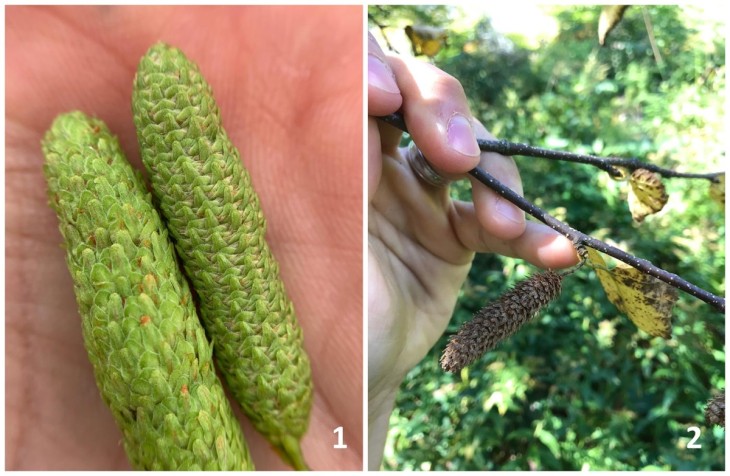As Peter Grima notes in his profile of heartleaf birch in Northern Woodlands Autumn 2024 edition, one of the easiest ways to distinguish this species from paper birch and gray birch is by examining the shape of its leaves. A second way is by comparing the trees’ female catkins.
The two photographs above illustrate the difference. The Photo One shows the catkins of a heartleaf birch (left) and paper birch (right). Notice how the three ascending lobes of the heartleaf’s catkin gives it a more ragged appearance than its neighbor. Photo Two shows a mature (and even more shaggy looking) heartleaf catkin.
If you want to find heartleaf birch, a good place to look is subalpine habitat. “Although heartleaf is not strictly a high-elevation mountain species,” writes Grima, “any peak bagger in the Northeast has likely encountered this tree.” In Photo Three, young red spruce and balsam fir fill in beneath a mature stand of heartleaf birch. The dark red bark of the tree in the center of the photo is characteristic of the species, but not reliably so.



